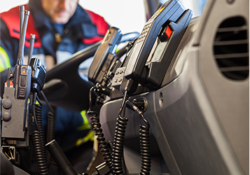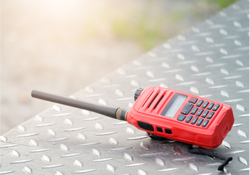Demystifying Digital: What you should know
Every manufacturer’s radio works by taking a radio carrier signal and placing audio information on it. Basically, you’re taking what you speak and the radio is converting the audio into an electrical signal and “copying” your speech onto a radio wave.
In an analog radio this task is accomplished usually one of two ways either using Amplitude or Frequency. This process is called modulation. There are other methods such as SSB, but they are not common to Land Mobile Radio you use every day.
An easy way to understand analog modulation, is to look at an LP record. Remember those? As the needle rides the groove you hear the performance because the record has recorded the modulation as cut. But, what happens when you have a scratch or dust on the record surface?
Really, a digital radio is the same. Now though, the digital radios task is to modulate a carrier with digital information instead of analog.
So, what’s the difference?
Well, here it is. Where the analog radio simply converts your voice and places it on a carrier, the digital radio performs extra steps. Digital radios convert what you speak from analog to digital using a VOCODER. The vocoder’s job is to capture speech and send it over the RF path, so now your voice is digitized. On the receiving radio, the digitized voice is then recreated into analog using the receiving radio vocoder. This process strips noise from the radio signal simply because the algorithm incorporated in the vocoder ignores noise which leaves you with clean audio.
Two major flavors of digital..
NXDN (FDMA) Kenwood, ICOM
DMR (TDMA) Motorola, Hytera
Let’s make it simple. If you are looking for the very best range, NXDN is king.
If you’re looking for capacity, TDMA may be worth considering.
There are many considerations to which products will perform best in your particular environment.
Give us a call if you’re interested and we’ll work with you to find the best solution for your communications needs.


